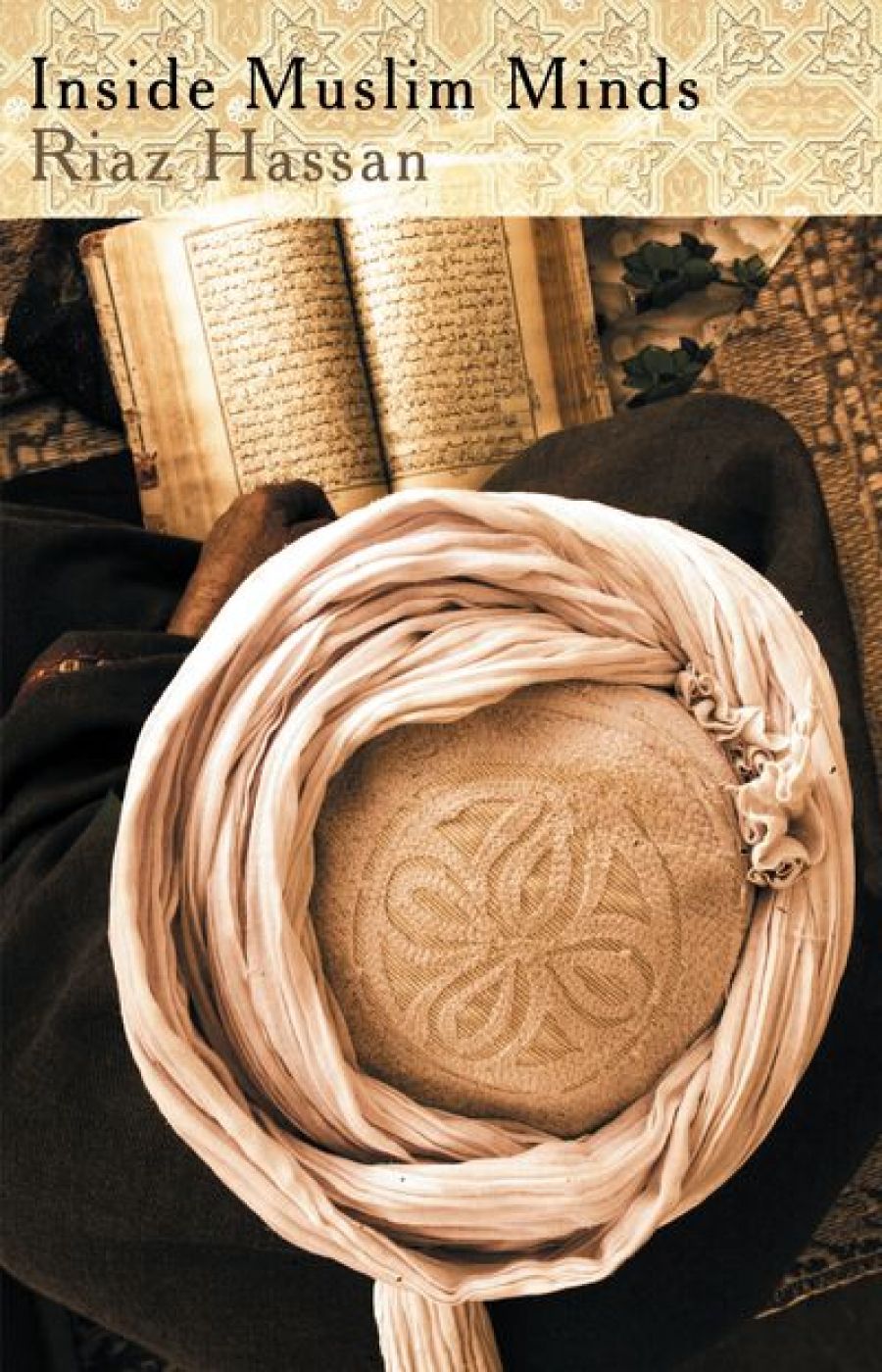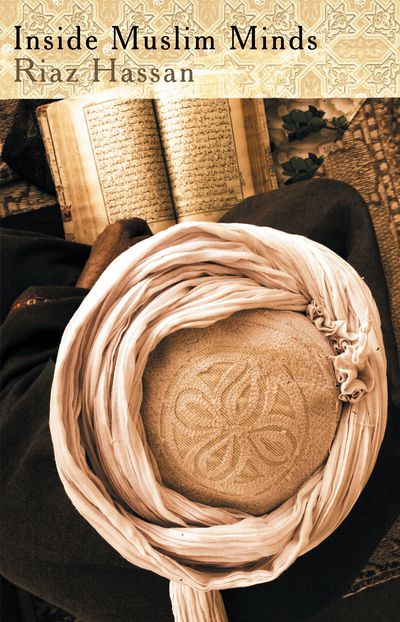
- Free Article: No
- Custom Article Title: The Muslim mindset
- Review Article: Yes
- Article Title: The Muslim mindset
- Online Only: No
- Custom Highlight Text:
What can explain the growing assertiveness of Islamist groups? Why are key aspects of the Islamic faith and civilisation that helped Islam flourish in its Golden Age – respect for life and property, philanthropy, tolerance and a thirst for science – being sidelined in the Muslim world? How can we explain the seemingly unstoppable slide from rational thinking in the Muslim world?
- Book 1 Title: Inside Muslim Minds
- Book 1 Biblio: MUP, $45 pb, 430 pp
- Book 1 Cover Small (400 x 600):

- Book 1 Cover (800 x 1200):

These are difficult and sensitive questions. But the test of excellence in scholarship is to ask such questions and not shy away from sensitive topics. Inside Muslim Minds is one such case. Presented as a comparative study of the relationship between faith and social beliefs, this volume covers a range of topics, from attitudes towards hijab to blasphemy to philanthropy.
Riaz Hassan starts his book with an account of disturbing episodes. He recalls how the Saudi Arabian police locked the doors of a burning school from the outside because they decided the fleeing girls were not appropriately dressed to exit; how a Cairo University academic was forced to leave Egypt in fear of his life after a colleague accused him of apostasy; and how the Islamic shari’ah courts in Aceh introduced public flogging for gambling charges. These are shocking cases; what makes them even more so is that they are becoming more frequent and that the public seems increasingly desensitised to such violations against humanity. What is happening to Muslim societies? Are they losing their moral compass?
Hassan’s exploration of this question is a wake-up call. He argues that Muslim societies are experiencing the cumulative effects of a long social process that has put a distorted notion of honour above basic humanity and ‘deconstructed … society’s sense of moral virtue and ethics’. This environment is conducive to the self-assured and aggressive brand of Islamism which Hassan identifies as Salafibism (a combination of Salafism and Wahabbism). Although this term may not be very helpful in understanding the current experience in most Muslim societies, the idea behind it is critical to explaining the most prevalent traits among radical Islamists. Hassan argues that the Islamist discourse and world view have gained greater influence in Muslim societies, inclining many to an irrational, anti-interpretative view of Islamic texts.
Hassan warns that the increasingly pervasive Islamist mindset is ‘self-righteous, arrogant, supremacist and puritan’. The problem for Muslim societies and for the rest of the world is that this mindset is becoming ‘normal’. To examine this, nine chapters are devoted to the exploration of survey data, collected in seven countries (Egypt, Indonesia, Iran, Kazakh-stan, Malaysia, Pakistan and Turkey). The results collected from more than six thousand respondents offer some hope in unexpected places, but the overall picture is bleak.
Perhaps the most worrying aspect of Hassan’s findings concerns the difficulty that Muslim societies have in freeing themselves from the patriarchal mould. Men in Indonesia, Malaysia, Pakistan and Egypt appeared most concerned with issues of hijab for their women and with the separation of sexes, while the majority of respondents (except in Kazakhstan) expected women to observe the Islamic dress code. Hassan argues that this preoccupation with the risks of female ‘immodesty’ among Islamic scholars has turned women into ‘mere physicality’, objectifying them for ‘male consumption’. This, Hassan declares boldly, is the ‘height of immodesty’.
Hassan’s survey on religious devotion and social attitudes reveals that Muslims in Turkey and Kazakhstan have a more fluid relationship with Islam than the other five states. Turks and Kazakhs are less likely than the other groups in this study to recite the Qur’an on a regular basis, and Kazakhs are very unlikely to fast during the month of Ramadan or to perform the daily prayer. The Soviet record of religious suppression and the push to generate a secular identity seem to have made a lasting impression. Kazakhs’ physical separation from the rest of the Muslim world, under Soviet rule, has led to a mental and emotional separateness, measured here in terms of affiliation with the global community of believers, or the Umma.
An interesting point in the survey findings is that respondents in Iran tended to be closer to those in Turkey and Kazakhstan, which have a history of secular rule, than to the other Muslim states. The evidence presented in Inside Muslim Minds seems to suggest an adverse relationship between the politicisation of Islam in Iran and religious piety among ordinary people. Many reformist Muslim thinkers have argued that the notion of an ‘Islamic state’ and of the merger of Islam with the state machinery damages Islam and leads to the corruption of the faith. The findings in this volume tend to support that position.
The material contained in this study and Hassan’s insightful presentation make this book a solid and valuable scholarly contribution to the literature. Hassan finds hope in the fact that respondents in the seven countries he studied showed a degree of difference in their attitudes. He concludes the book on an optimistic note. But his optimism may be challenged by the fact that, once the unusual cases of Kazakhstan and Turkey (for their history of secularism), and Iran (for its state-run policy of Islamism), are removed from the equation, the rest demonstrate a worrying similarity in their attitude.
Hassan should be applauded for enhancing our knowledge of Muslim societies. Returning to our opening questions, Inside Muslim Minds may not offer a comprehensive answer – is it even possible? – but it goes a long way towards addressing them, in a dispassionate and rational manner.


Comments powered by CComment